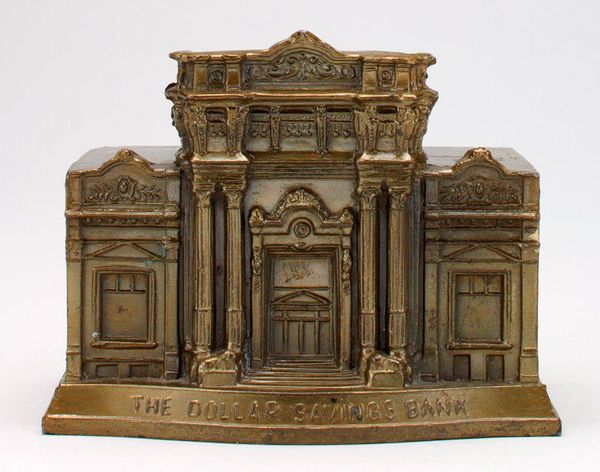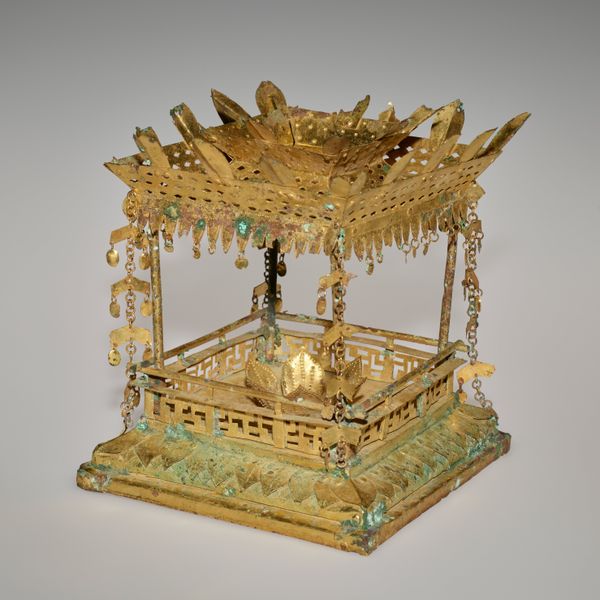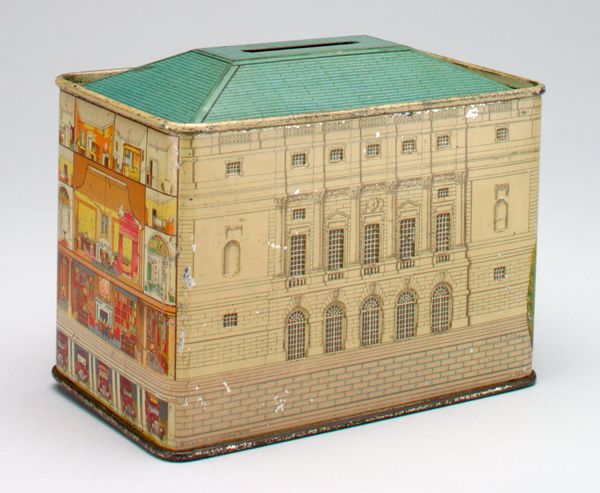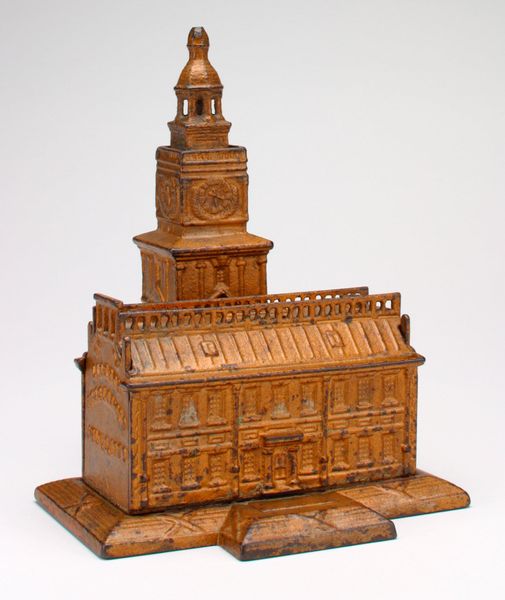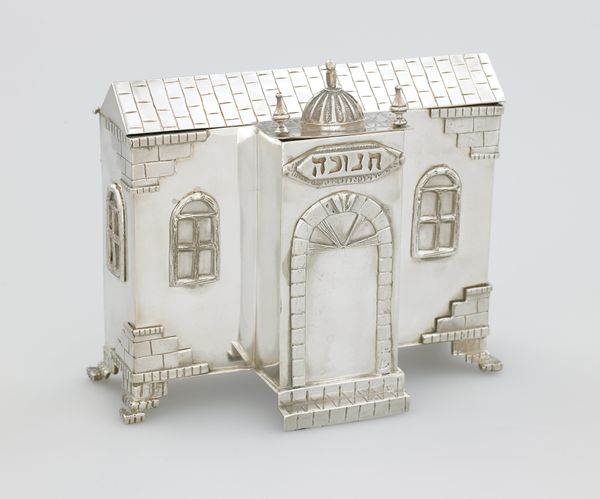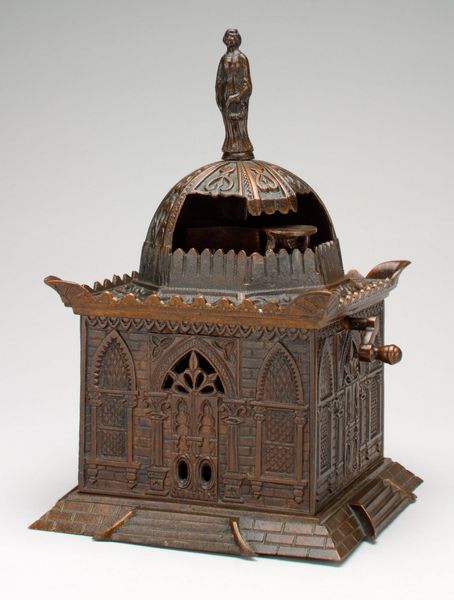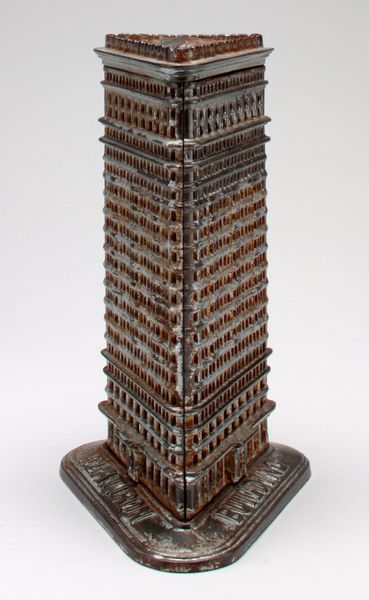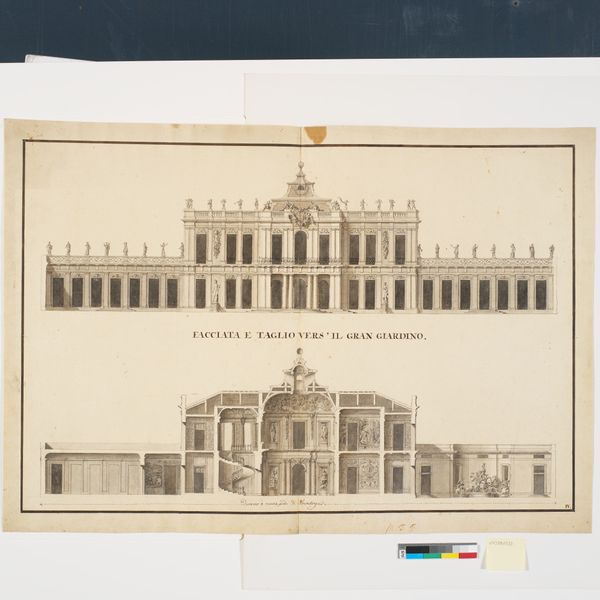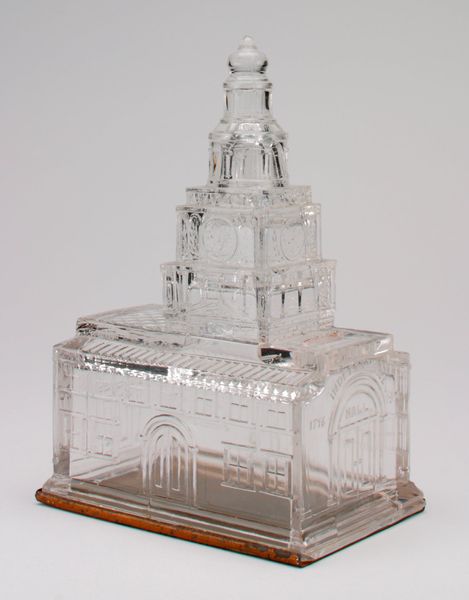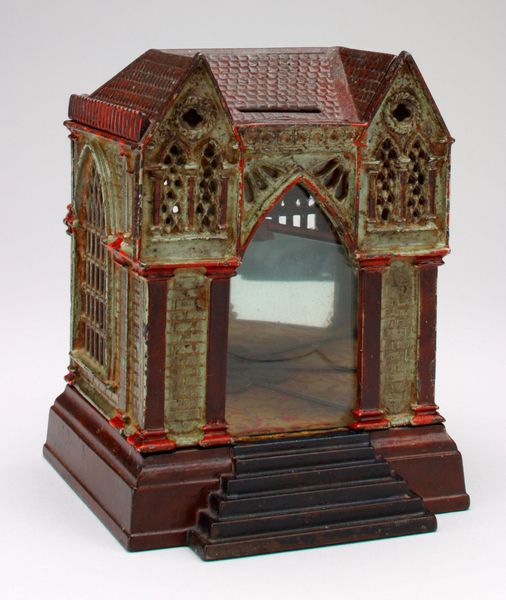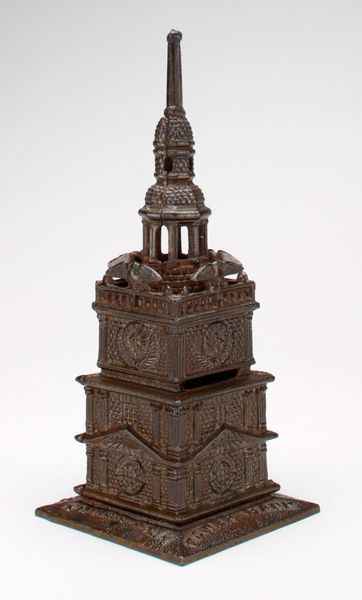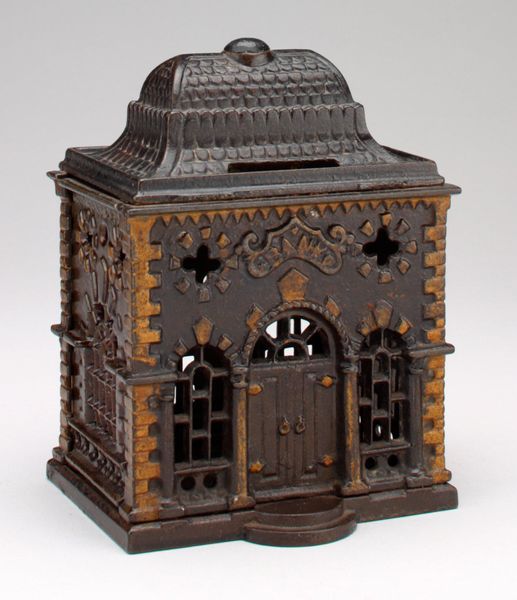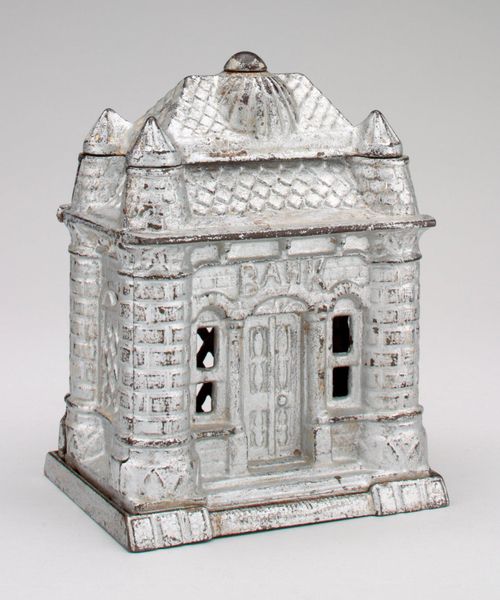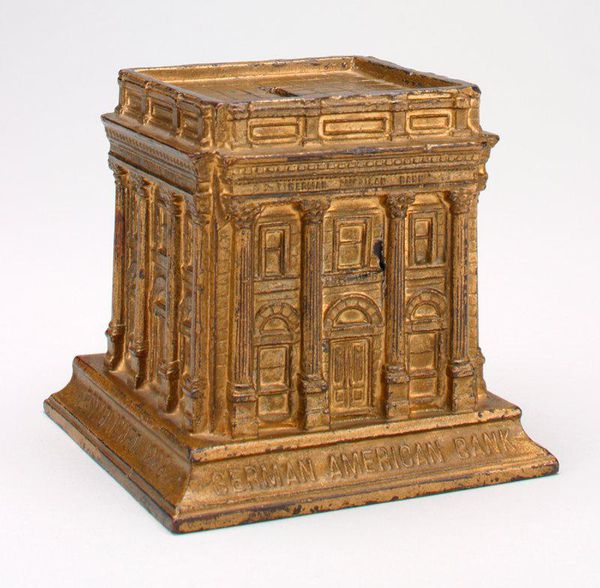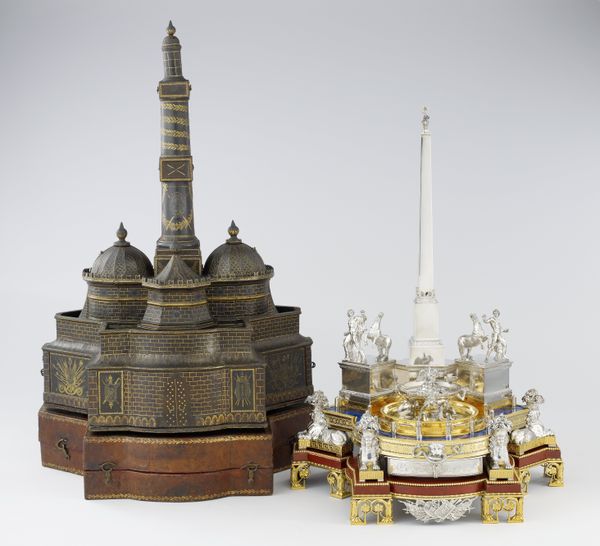
Architectural model of the temple of King Solomon in Jerusalem 1883
sculpture, architecture
3d render
3d rendering
virtual 3d design
architecture mock-up
front view render
ancient-mediterranean
sculpture
architectural render
metallic object render
islamic-art
decorative-art
architecture render
render
product render
architecture
Dimensions: Temple Alone: Height: 26" (66 cm); Width: 46" (117 cm); Depth: 48" (122 cm). Overall measurement, including forecourt: Length: 7' 8" (234 cm); Width: 3' 8" (112 cm)-
Copyright: Public Domain
Curator: The lustrous sheen of this model practically demands our attention, doesn’t it? I find it both dazzling and profoundly… wistful. Editor: Indeed. What we’re observing is an 1883 architectural model of the Temple of King Solomon in Jerusalem. It’s quite something, isn’t it? Especially since it's here at the Metropolitan Museum of Art in New York, NY, rather than, say, in Jerusalem. Curator: A miniature world rendered in what looks like gold, capturing something monumental yet also lost to time. There's an intense, gilded yearning radiating off it. A longing for permanence. I almost expect the tiny figures to start bustling about. Editor: It’s the architectural detail that truly captivates me. Notice the intricate articulation of columns, the precise geometry of the courtyard, and the imposing presence of the dome. It adheres to the conventions of the day when visualizing holy structures of old. Curator: I get the sense that this piece is less about perfect historical accuracy and more about invoking a sense of wonder and reverence. I mean, who truly knows precisely what the Temple looked like? The artist imbues it with a golden, almost celestial aura, inviting us to dream rather than dissect. Editor: The golden sheen is undoubtedly powerful, lending a symbolic weight to the model. Consider its possible meanings: power, wealth, divine favor? Yet, at its core, it remains an attempt to codify spiritual and historical notions within formal artistic boundaries, right? Curator: Perhaps. It's a reminder that even our grandest achievements and sacred spaces are, in the end, ephemeral. It provokes questions more than offering any definite answers. This architectural representation is therefore poetic and fragile in equal measure. Editor: Ultimately, in confronting such relics from a distant history and the long-lasting impressions, we find a mirror to our own aspirations and inevitably transient realities. Curator: Agreed. I came here expecting architecture, but what struck me instead was how profoundly temporal a supposedly timeless form can appear.
Comments
No comments
Be the first to comment and join the conversation on the ultimate creative platform.
